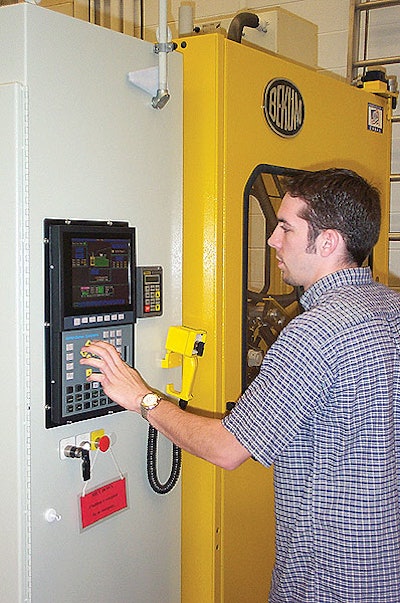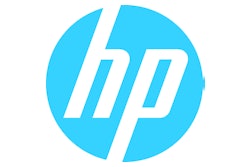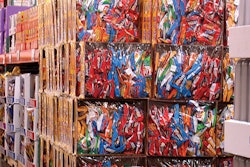
Our strength is in exploring how overall package performance is delivered by the materials used to make the package.”
That statement, delivered by Dr. Susan Selke along a tour that took Packaging World through the dozen or so laboratories that make up the School of Packaging at Michigan State University, pretty much sums up the heart and soul of this country’s oldest academic program in packaging. Selke is one of 13 full-time professors who teach at the School of Packaging.
Selke’s assertion that packaging materials are front and center at MSU is not to say that students don’t learn about packaging machinery, including package converting machinery. But like any academic program, this one has a core emphasis, and that emphasis is on materials and how they perform in the packaging arena.
Boasting more than 6ꯠ alumni and a current undergraduate enrollment of about 550, the School of Packaging at MSU’s main campus in East Lansing, MI, is now in its 53rd year. In addition to the undergrads, some 80 graduate students conduct research in a variety of disciplines.
“We have several strong core areas of research in materials science,” says Dr. Bruce Harte. Now a professor at the School of Packaging, Harte just completed an 11-year stint as the program’s director. “Material permeability, shelf-life testing, and product/package compatibility are all strong programs here. The same is true for distribution packaging, where protective packaging and the effects of shock and vibration are explored.”
Distribution consortium
A focal point for research into distribution packaging is MSU’s Consortium for Distribution Packaging Research. Established in 1990, its aim is to encourage basic and applied research, testing, and service in distribution packaging. The consortium’s research faculty consists of faculty members of the School of Packaging as well as graduate researchers. The consortium can also draw on the diverse backgrounds of the faculties of Chemical Engineering, Food Science, Materials Science, Mechanical Engineering, and Statistics.
The Consortium for Distribution Packaging has received funding from more than 20 companies since its launch, including Federal Express, United Parcel Service, Fiber Box Assn., Hewlett-Packard, Eastman Kodak, Clorox, QVC, and Lansmont. More than 50 research studies have been completed, and most of these have been published by the faculty to share information with the entire packaging community. For a complete list of projects, go to www.packaging.msu.edu/consortium.php.
Another key research center at MSU is the Center for Food & Pharmaceutical Packaging Research. Its objective: To build a scientific base for making packaging decisions about food and pharma products. Member companies, who pay a fee to join, include both consumer packaged goods companies and suppliers of packaging machinery and materials. The members help prioritize research projects and advise the center’s directors on budget and management matters.
Interdisciplinary research at the center draws not only on the diverse background of the faculty of the School of Packaging, but also on MSU departments including Food Science and Human Nutrition, Agricultural Engineering, Biomechanics Evaluation Laboratory, Materials Science and Mechanics, Chemical Engineering, Statistics and Probability, and the College of Human Medicine. For more information on the center’s pharmaceutical research, contact Dr. Hugh Lockhart at [email protected]; to learn more about food research, contact Dr. Bruce Harte at [email protected].
Thorough overview
One thing that becomes clear on a tour at MSU is that the School of Packaging gives students an overview of packaging that is thorough enough to help them understand just what it takes to be a packaging professional. The plastics processing lab, for instance, includes not only blown- and cast-film extrusion equipment, but also compression molding, thermoforming, and tray sealing systems, too. In the paper lab, a cad/cam table helps students learn how to print, cut, and fold both paperboard cartons and corrugated shippers. And in the packaging equipment lab, a portal for scanning radio frequency identification tags is among the latest arrivals.
“We’re moving pretty aggressively into supply chain management, so naturally we’re putting a special emphasis on RFID,” says Harte.
Joining Dr. Selke during PW’s tour of the MSU School of Packaging was undergrad Kristy Radakovic, a junior this year. In one of the packaging labs, she helped demonstrate a custom-built device that measures how much time a subject spends looking at various areas on a package. Dr. Laura Bix explains how the device works.
“It uses what’s known as a ‘bright-pupil technique,’” says Bix. “It sends a near-infrared light beam, which is outside the visible spectrum, at the eye. Then an algorithm factors in both pupil and corneal reflection to pinpoint what part of the package the eye is focused on.”
“This kind of device is less likely to be used in the classroom,” adds Selke. “It’s really designed more for research. It’s being used to examine tamper-evident or child-resistant warnings labels on packages. If you ask someone to find a warning label on a package, is there any guarantee that they’ll find it? Is it conspicuous enough? This device gives us some insight into such things.”
Shortly after this demonstation, our tour of MSU took us to the machinery lab, where graduate student Kirk Valko demonstrated the extrusion blow molding system that is part of MSU’s arsenal of teaching tools. Also on hand was Dr. Harold Hughes, a professor whose special area of expertise is on the machinery side of the packaging function. He described one particular equipment need that the School of Packaging constantly faces.
“We need equipment that is small and relatively slow. Otherwise, it wouldn’t function well in what is, after all, a classroom setting. But we also want that equipment to have the latest in modern controls technology. How else can we prepare our students for the workplace of the future? Sometimes it’s difficult to find this unusual combination of equipment characteristics—lab-sized yet technically current. “
Study abroad
While most students at the School of Packaging register for classes offered on-campus, MSU also has overseas study programs, typically in Japan, the United Kingdom, France, Sweden, and Spain.
“The idea is to give students some exposure to packaging from someone else’s perspective,” says Harte. “What approach do other cultures take in areas like packaging security, marketing, shelf impact, and so on?”
Online study is another option. Through the Internet, the School of Packaging brings its Master of Science in Packaging program to online learners, who have access to the same curriculum and professors as the on-campus learners. And if a Master’s Degree is not in a packaging professional’s plans but that person seeks expanded knowledge in a particular area, he or she can enroll in one or several courses, depending on interest and time available.
Innovative and flexible offerings like these are among the reasons that MSU’s School of Packaging has flourished for more than half a century. Sara Risch, the newly appointed director of the school, aims to maintain these high standards. She believes it’s the quality of the faculty that, more than any other key strength, will make that possible.
“Our greatest strength as we head into the future is our phenomenal faculty,” says Risch. “They like teaching and they like the field they’re working in. Plus they have strengths in so many different areas of packaging. That’s so important to the strength of the program.”























